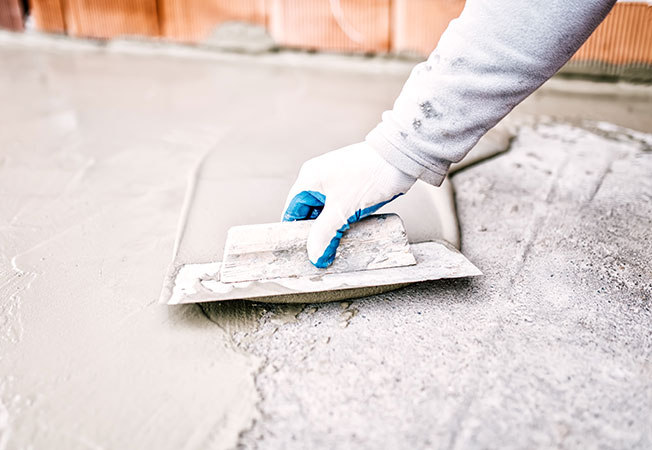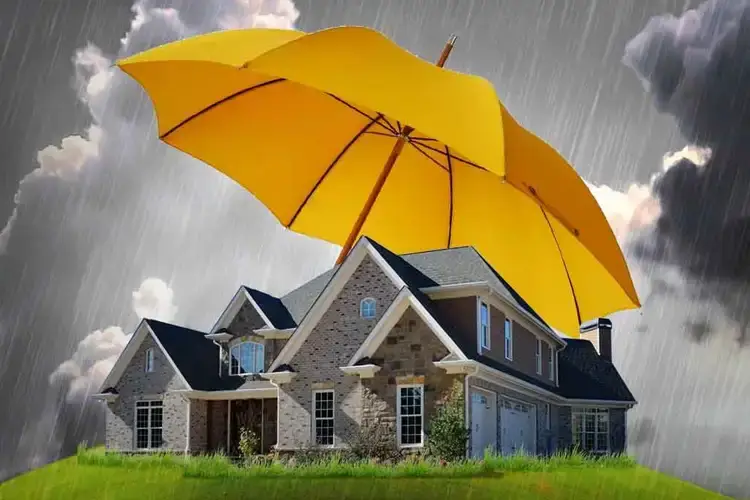The Role of Sump pump discharge drainage Omaha in Improving Water Flow
How Waterproofing Functions: A Detailed Take A Look At Strategies and Technologies
Waterproofing is crucial for shielding structures from moisture-related damages. It entails various techniques and innovations that produce barriers versus water invasion. Conventional techniques, such as compressed clay, exist together with modern advancements like liquid-applied membranes. Understanding the nuances of these methods is important for effective application. The efficiency of any waterproofing option pivots not just on the techniques used yet also on recurring maintenance and examination. What are the vital elements that influence long-lasting efficiency?
Recognizing the Essentials of Waterproofing
Waterproofing is an essential procedure that shields structures from water invasion, which can cause considerable damages over time. This approach entails the application of different products and techniques designed to produce a barrier versus wetness. The key goal is to protect against water from permeating surface areas, which can cause deterioration, mold development, and architectural instability.Various variables influence the option of waterproofing technique, consisting of the sort of framework, its area, and ecological conditions. Understanding the physics of water activity and the buildings of different products is essential in selecting an efficient waterproofing solution.Effective waterproofing not only safeguards structures however likewise improves their durability and honesty. Usually, it is integrated right into the layout phase of building to guarantee thorough defense. As understanding of water-related concerns expands, the importance of recognizing waterproofing basics becomes significantly clear to architects, contractors, and homeowner alike.
Conventional Waterproofing Techniques
Traditional waterproofing approaches have actually been used for centuries, counting on reliable strategies and materials to safeguard frameworks from water damage. Among the earliest approaches includes the use of clay, which, when compacted, creates an all-natural obstacle against dampness. In addition, bitumen, a sticky, black material originated from petroleum, has actually been utilized for its waterproof homes, often used to roofing systems and foundations.Another method includes the application of lime-based plasters, which supply a breathable layer that permits wetness to get away while stopping water access. Thatch roofing, a traditional method still seen in some societies, supplies exceptional waterproofing due to its firmly loaded straw layers.Moreover, making use of rock and brick has actually projected, as these products are naturally immune to water when correctly installed. Generally, traditional waterproofing methods stress the importance of choosing appropriate materials and building techniques to improve longevity against water breach.
Modern Waterproofing Technologies
Improvements in contemporary waterproofing technologies have revolutionized the means frameworks are protected from water damage. Ingenious techniques such as liquid-applied membranes and innovative sealants have actually improved the efficiency and versatility of waterproofing remedies. These modern technologies permit smooth application, reducing the threat of leakages and ensuring comprehensive protection over complex surfaces.Moreover, the assimilation of wise technologies, such as dampness sensing units and automated monitoring systems, allows real-time analysis of waterproofing efficiency. This aggressive technique promotes prompt upkeep and decreases lasting repair service costs.Additionally, innovations in spray-applied coverings supply fast application and excellent adhesion, adjusting to numerous substrates while giving robust defense. Methods like polymer-modified systems even more improve versatility and durability, making them ideal for varied environments. Overall, modern waterproofing innovations not only minimize water intrusion however additionally add to the longevity and sustainability of structures, noting a significant shift in the market.
Materials Made Use Of in Waterproofing
The effectiveness of waterproofing services greatly counts on the materials used in their application. Various products are utilized to create barriers against water access, each with special buildings fit for different environments. Generally utilized products include membrane layers, finishings, and sealants.Liquid-applied membranes, commonly made from polyurethane or acrylic, develop a smooth obstacle that adjusts to intricate surface areas. Sheet membrane layers, normally constructed from rubber or polycarbonate, offer toughness and are optimal for larger locations. Additionally, cementitious waterproofing materials, composed of cementitious compounds, offer excellent adhesion and flexibility.Sealants made from silicone or polyurethane are vital for joints and seams, making sure complete security. Advanced materials, such as geo-composite membrane layers, combine multiple functions, improving performance. Overall, the option of waterproofing materials is important in accomplishing lasting and efficient water resistance, customized to specific project needs and ecological problems.
Usual Applications of Waterproofing
Waterproofing plays a vital function in different markets, ensuring the durability and stability of structures. Typical applications include domestic remedies that shield homes, commercial facilities that safeguards services, and commercial setups that require durable protection against moisture. Recognizing these applications highlights the significance of waterproofing in preserving both safety and functionality throughout different atmospheres.
Residential Waterproofing Solutions
Lots of property owners face difficulties with dampness invasion, making effective household waterproofing options essential. Different techniques exist to address this issue, consisting of exterior and interior waterproofing systems. Inside services frequently include the application of sealers and coverings to basement wall surfaces, which aid protect against water seepage. Exterior approaches commonly include the installment of drainage systems and waterproof membrane layers that draw away water away from the foundation.Additionally, home owners might consider sump pumps to eliminate water buildup and dehumidifiers to manage humidity degrees. Appropriate grading and making use of seamless gutters additionally play a crucial duty in taking care of water flow around the home. By executing these approaches, home owners can considerably reduce the threat of water damage and click for more mold development, making sure a completely dry and safe living atmosphere.

Commercial Framework Defense
Effective waterproofing solutions play an important duty in the security of commercial look what i found facilities. Foundation waterproofing Omaha. These techniques are necessary for securing buildings, parking frameworks, and bridges from water damage, which can jeopardize architectural stability and bring about pricey fixings. Typical applications consist of the installment of membrane layers, coverings, and sealants that create barriers versus wetness seepage. Locations such as basements, roofing systems, and outside wall surfaces are commonly focused on to ensure long life and longevity. Additionally, waterproofing systems can enhance power effectiveness by avoiding water-related issues that may cause mold growth and damage. By implementing robust waterproofing actions, residential or commercial property owners can safeguard their financial investments and keep operational effectiveness, ultimately adding to the total sustainability of industrial facilities
Industrial Applications Introduction
While different industries encounter unique challenges, the demand for dependable waterproofing solutions stays a constant in industrial applications. Industries such as production, construction, and power frequently encounter environments where moisture exposure can jeopardize structural stability and operational performance. In making facilities, waterproofing is essential for protecting machinery and materials from water damage. In building and construction, it safeguards foundations and cellars against groundwater infiltration. The power market relies upon waterproofing for the protection of tools in hydroelectric plants and offshore frameworks. Furthermore, food processing markets utilize waterproofing to assure health and conformity with safety requirements. Overall, efficient waterproofing remedies are essential for enhancing resilience, safety and security, and performance throughout various industrial settings.
Upkeep and Durability of Waterproofing Solutions
Waterproofing services are designed to supply long-lasting protection versus dampness breach, routine upkeep is necessary to guarantee their performance and longevity. Regular evaluations play a significant role in recognizing potential concerns such as cracks, peeling off, or indicators of water damage. Attending to these troubles promptly can stop more deterioration and pricey repairs.Additionally, cleaning up the surface of waterproof locations aids eliminate dust see this page and particles that could compromise the stability of the waterproofing obstacle. It's additionally advisable to reapply safety coverings or sealers as advised by manufacturers to preserve suitable efficiency. Ecological elements, such as UV direct exposure and severe weather, can influence the lifespan of waterproofing materials, making routine analysis important
Often Asked Inquiries
Can Waterproofing Be Applied in Cold Weather?
The inquiry of using waterproofing in cold climate elevates issues about bond and treating. Many products may not do at their best in reduced temperature levels, requiring careful selection and factor to consider of specific guidelines for effective application.
Just How Long Does Waterproofing Normally Last?
The period of waterproofing effectiveness differs based upon materials and ecological elements. Normally, it can last from 5 to 10 years, however regular maintenance and inspections are vital to ensure peak performance and longevity.
Is DIY Waterproofing Effective and Safe?
The effectiveness and safety and security of do it yourself waterproofing rely on numerous factors, including material quality and application strategy. While some individuals accomplish satisfactory results, others might run into concerns that endanger long-lasting security and architectural stability.
What Are the Signs of Failing Waterproofing?
Indicators of stopping working waterproofing consist of noticeable water stains, peeling paint, mold and mildew growth, mildewy smells, and dampness in wall surfaces or ceilings - Yard drainage Omaha. These indicators recommend endangered obstacles, demanding prompt inspection and possible removal to stop further damages
Just how Do I Choose the Right Waterproofing Specialist?
